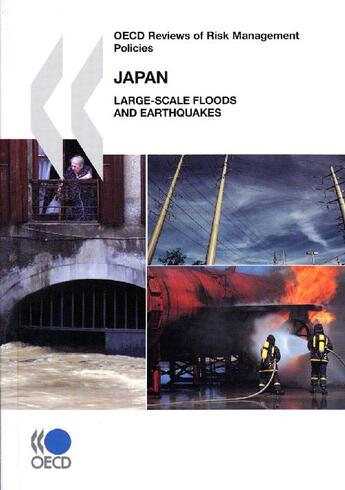Des idées de lecture pour ce début d'année !
Passionné(e) de lecture ? Inscrivez-vous
gratuitement ou connectez-vous pour rejoindre la
communauté et bénéficier de toutes les fonctionnalités du site !

Damages to economic assets resulting from natural disasters have soared in the past fifteen years, and climate change models forecast intensified exposure to extreme weather in many OECD countries. This OECD review of risk management policies focuses on Japan, because the geography, topography and climate of its national territory subject it to serious natural hazards, especially seismic activity and typhoons. The report looks at Japan's policies in the areas of monitoring, preparing for and responding to floods and earthquakes, seeking out and identifying good practices and areas where improvements could be made. The case studies consider several issues of particular interest to policy makers, such as how to take climate change into account for long term policy planning related to large scale floods, and Japan's unique earthquake insurance scheme for damages whose probability and impact are hard to accurately assess.
Tables des matières:
Acronyms and Organisations Cited PART I. LARGE-SCALE FLOODS Executive Summary Chapter 1. Introduction: Flood Risks in Japan Chapter 2. Integrated Approach to Flood Risk Management Chapter 3. Risk Assessment and Communication Chapter 4. Flood Prevention and Damage Mitigation Chapter 5. Emergency Response Chapter 6. Recovery Annex I.1. Basin Territory River Administration in France Annex I.2. The United Kingdom Administration of Flood Risk Management Annex I.3. Flood Protection and Climate Change - the Bavarian Adaptation Strategy Annex I.4. The United Kingdom Use of Flood Risk Maps Annex I.5. International Commission for the Protection of the Rhine Annex I.6. The Dutch System for Emergency and Crisis Management Annex I.7. Administrative Organisation of Emergency Response in Sweden Annex I.8. Post-Disaster Experiences Collection and Communication in France Annex I.9. The Post-Disaster Recovery Stage: A Step towards Enforcement of Risk Culture Annex I.11. Self-Assessment Questionnaire Annex I.12. List of Institutions Interviewed Bibliography PART II. EARTHQUAKES Executive Summary Chapter 7. Introduction: Seismic Risks in Japan Chapter 8. The General Policy Framework Chapter 9. Risk Assessment and Communication Chapter 10. Disaster Prevention Chapter 11. Emergency Preparedness and Response Chapter 12. Post-Event Issues Annex II.1. Methodology Annex II.2. Self-Assessment Questionnaires Annex II.3. List of Institutions Interviewed Annex II.4. Members of the Steering Group Bibliography
Il n'y a pas encore de discussion sur ce livre
Soyez le premier à en lancer une !

Des idées de lecture pour ce début d'année !

Si certaines sont impressionnantes et effrayantes, d'autres sont drôles et rassurantes !

A gagner : la BD jeunesse adaptée du classique de Mary Shelley !

Caraïbes, 1492. "Ce sont ceux qui ont posé le pied sur ces terres qui ont amené la barbarie, la torture, la cruauté, la destruction des lieux, la mort..."